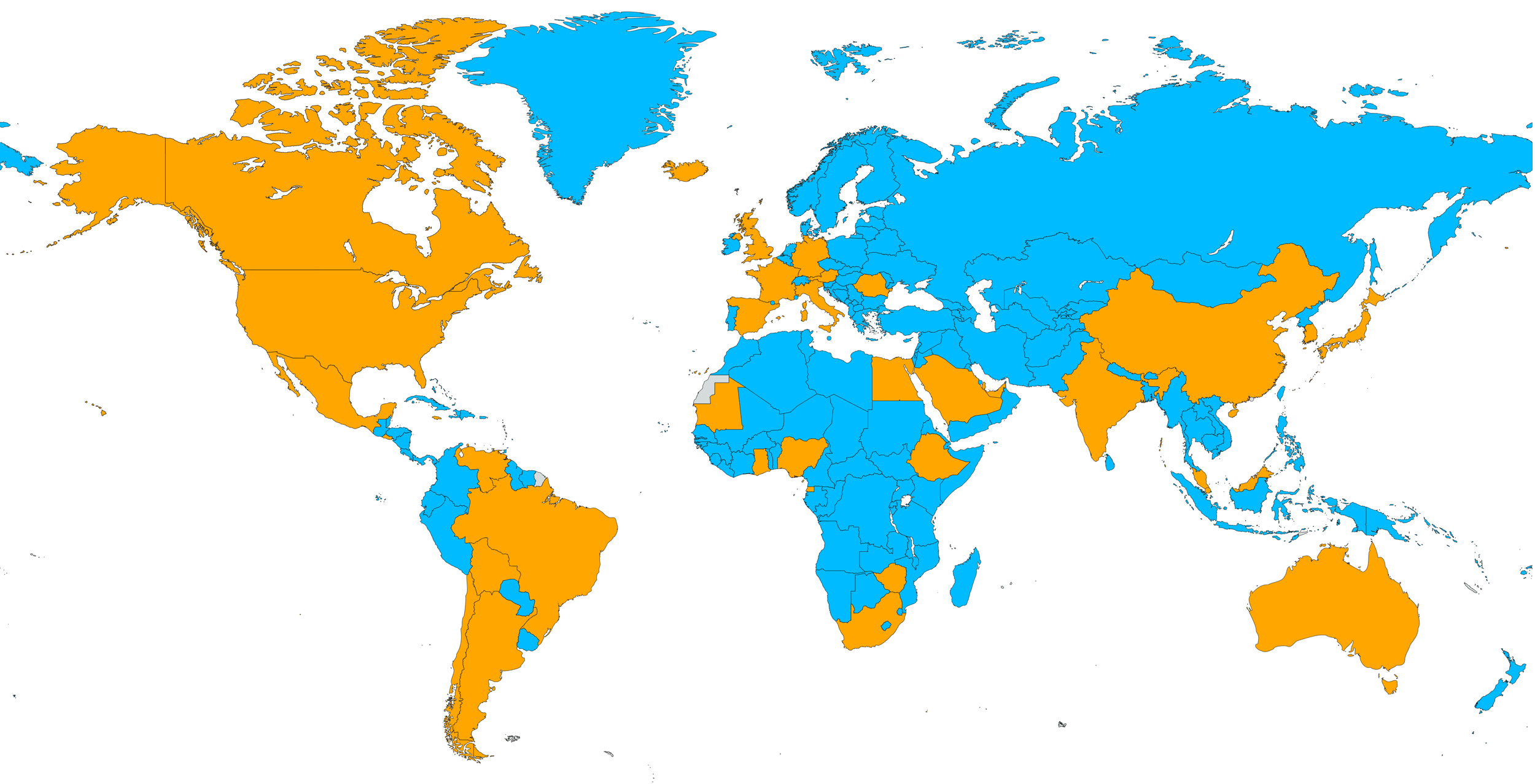AIPs
Summary
1/16/2024 Read time: 8 minutes
ICAO member states issue Aeronautical Information Publications (AIPs) to inform foreign operators how to fly in their territories legally. When researching a new country to fly into, the sections of high priority are:
GEN 1.1, 1.5, 1.6, 1.7: (Annex 2, 5, & 6 Part II)
ENR 1.1, 1.3, 1.5, 1.6
AIP Links:
Details
ICAO has published extensive technical information on how countries worldwide should operate. Since these are only suggestions, each country is responsible for accepting the ICAO SARPs or adopting its own.
If you haven’t read about ICAO documents, start here first.
ICAO member States will publish an AIP to inform operators of their aviation regulations. They are in a standardized format so operators can quickly navigate the relevant information. When a country’s regulations align with ICAO SARPs, they may point to the relevant ICAO publication for you to look up yourself. If a county’s regulation differs from ICAO, it will be in the differences section of their AIP (GEN 1.7).
This is why becoming familiar with the base ICAO material is critical. Much of the world closely aligns with ICAO SARPs rather than the FAA procedures. If you know how ICAO operates, you can beef up on the differences within each country and are well prepared for operations.
Is it an AIM?
Nope. Similar, but different audiences. The AIM is the FAA’s education manual for FAA pilots. The FAA also published an AIP for international pilots to comply with ICAO Annex 15. Due to the standardized format and ICAO document references, it is unwieldy if you want to learn about domestic operations. That is why, as an FAA-rated pilot, an AIP probably never came up in training.
Revisions of an AIP are on a 28-day schedule. In addition, some countries will publish SUPs that serve as temporary revisions until the next AIP is issued. Most developed countries publish electronic AIPs for free. Some countries are paper only and require purchase. Eurocontrol has a master list of AIPs here. Or if you want digital access to AIPs anywhere in the world, look into Avinym.
Outline
Each AIP is divided into three main parts and corresponding subsections via a numbering system. Highlighted are the sections you especially want to research before flying into the country.
Part 1: General (referred to as GEN)
GEN 0.1 – Preface
GEN 1.1 – Designated Authorities
GEN 1.2 – Flights Into or Over US Territorial Airspace
GEN 1.3 – Entry, Transit, and Departure of Passengers
GEN 1.4 – Entry, Transit, and Departure of Cargo
GEN 1.5 – Aircraft Instruments, Equipment, and Flight Documents
GEN 1.6 – Summary of National Regulations and International Agreements/Conventions
GEN 1.7 – Differences from ICAO Standards, Recommended Practices and Procedures (SARPs)
Part 2: En Route (ENR)
ENR 1 – General Rules and Procedures
ENR 2 – Air Traffic Sercies Airspace
ENR 3 – ATS Routes
ENR 4 – Navigation Aids/Systems
ENR 5 – Navigation Warnings
ENR 6 – Helicopter Operations
ENR 7 – Oceanic Operations
ENR 8 – Unmanned Aircraft Systems (UAS)
Part 3: Aerodromes (AD)
AD 1 – Aerodromes – Introduction
AD 2 – Aerodromes
Highlights
GEN 1.1 contains the contact information for government agencies responsible for aviation, customs, immigration, accident investigation, etc.
GEN 1.5 content varies by country. The US, for instance, points to ICAO Annex 6. Iceland lists specific equipment requirements and references EASA Air Operations Regulation (EU) 965/2012 (an easy-to-read 2300-page document). The UK publishes much information similar to what you would find in an AIM in this section.
GEN 1.6 references how to find actual regulations. IE, FAR Part 61, 91, etc.
GEN 1.7 comprises most of the nitty-gritty details you are looking for. To use this document effectively, you must be familiar with the ICAO references. This section details the exceptions to the ICAO rules the member states have adopted. The assumption is that you are familiar with or have access to the ICAO information.
Differences are organized by ICAO Annex and PANS docs. Within GEN 1.7 and high on the research list:
Annex 2 – Rules of the Air
Annex 5 – Units of Measure
Annex 6 – Operation of Aircraft, Part II – International General Aviation, Section II – International GA Operations & Section III – Additional requirements (for aircraft over 12,500lbs)
Several ENR sections are worth perusing. Unlike GEN 1.7, which details how things are different from ICAO, the ENR sections detail how things are within the member state.
ENR 1.1 – General Rules
ENR 1.3 – Instrument Flight Rules
ENR 1.5 – Holding, Approach, and Departure Procedures (1.5.1 will show if the member state uses PANS-OPS)
ENR 1.6 – ATS Surveillance Services and Procedures (2.2 special squawk codes)
Jeppesen Airway Manual
There is an alternative to the above research process. The fine folks at Jeppesen produce an airway manual available within Foreflight Documents if you have a Jeppesen Charts subscription. It consolidates information from ICAO and member-state publications into a General Airway Manual and several Regional Airway Manuals. These are like Jeppesen’s version of an AIM.
The General manual, for instance, within the ATC section, explains many PANS-OPS procedures from ICAO Doc 8168 and Annex 2 highlights. The Regional manual includes procedures from Regional Supplements (ICAO Doc 7030) and State-specific procedures and differences.
The format of the data is entirely independent of ICAO docs and State AIPs. Even though it is intended to be a consolidated summary of information, you are looking at thousands of pages between the General Manual and one Regional Manual. It has good information but can be challenging to navigate in and of itself.
My practical use of the Jepp Manuals has been as a research tool in addition to the primary ICAO and state-produced resources. So, if flying into Germany, besides reading up on the State AIP, I will look into two areas in particular:
Jepp’s Europe Airway Manual – Air Traffic Control – State Rules and Procedures – Germany Rules and Procedures
Jepp’s Europe Airway Manual – Emergency – State Rules and Procedures – Germany ICAO Differences or State Special Procedures
Aviate
Bookmark this page. Try a linked AIP of your choice and go through the highlights and the Jepp Regional Airway Manual to familiarize navigating the documents:
GEN 1.1 – Designated Authorities
GEN 1.5 – Aircraft Instruments, Equipment, and Flight Documents
GEN 1.6 – Summary of National Regulations and International Agreements/Conventions
GEN 1.7 – Differences from ICAO Standards, Recommended Practices and Procedures (SARPs)
Annex 2 – Rules of the Air
Annex 5 – Units of Measure
Annex 6 – Operation of Aircraft, Part II – International General Aviation, Section II – International GA Operations & Section III – Additional requirements (for aircraft over 12,500lbs)
ENR 1 – General Rules and Procedures
ENR 1.1 – General Rules
ENR 1.3 – Instrument Flight Rules
ENR 1.5 – Holding, Approach, and Departure Procedures
ENR 1.6 ATS Surveillance Services and Procedures
Jepp Regional Airway Manual – ATC and Emergency State Rules and Procedures
Navigate
Article 11 of 22 on your international operations journey. Eject at any time to land at international articles.






